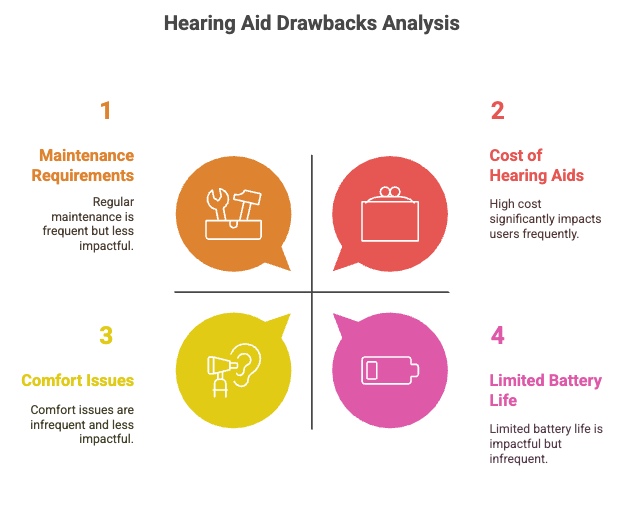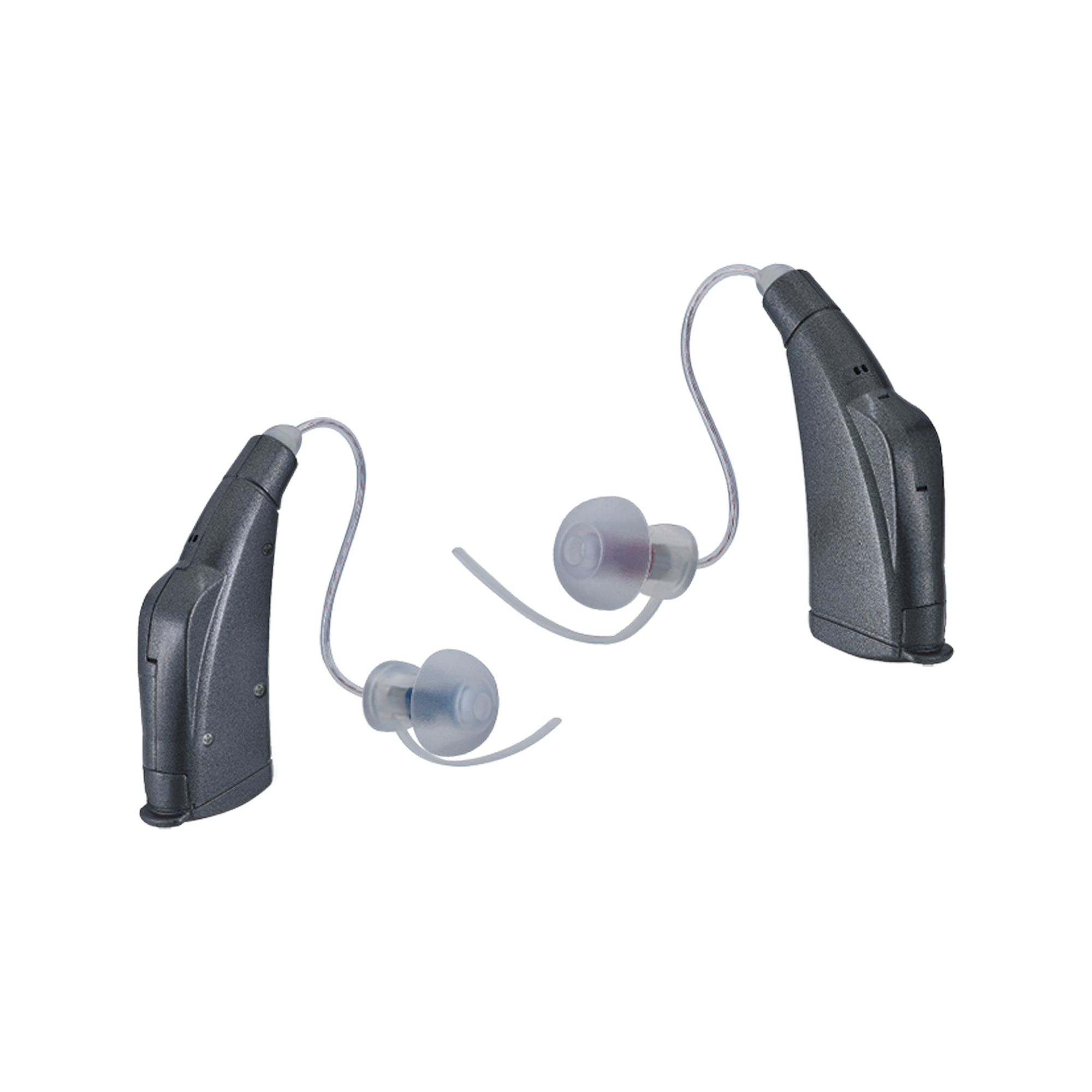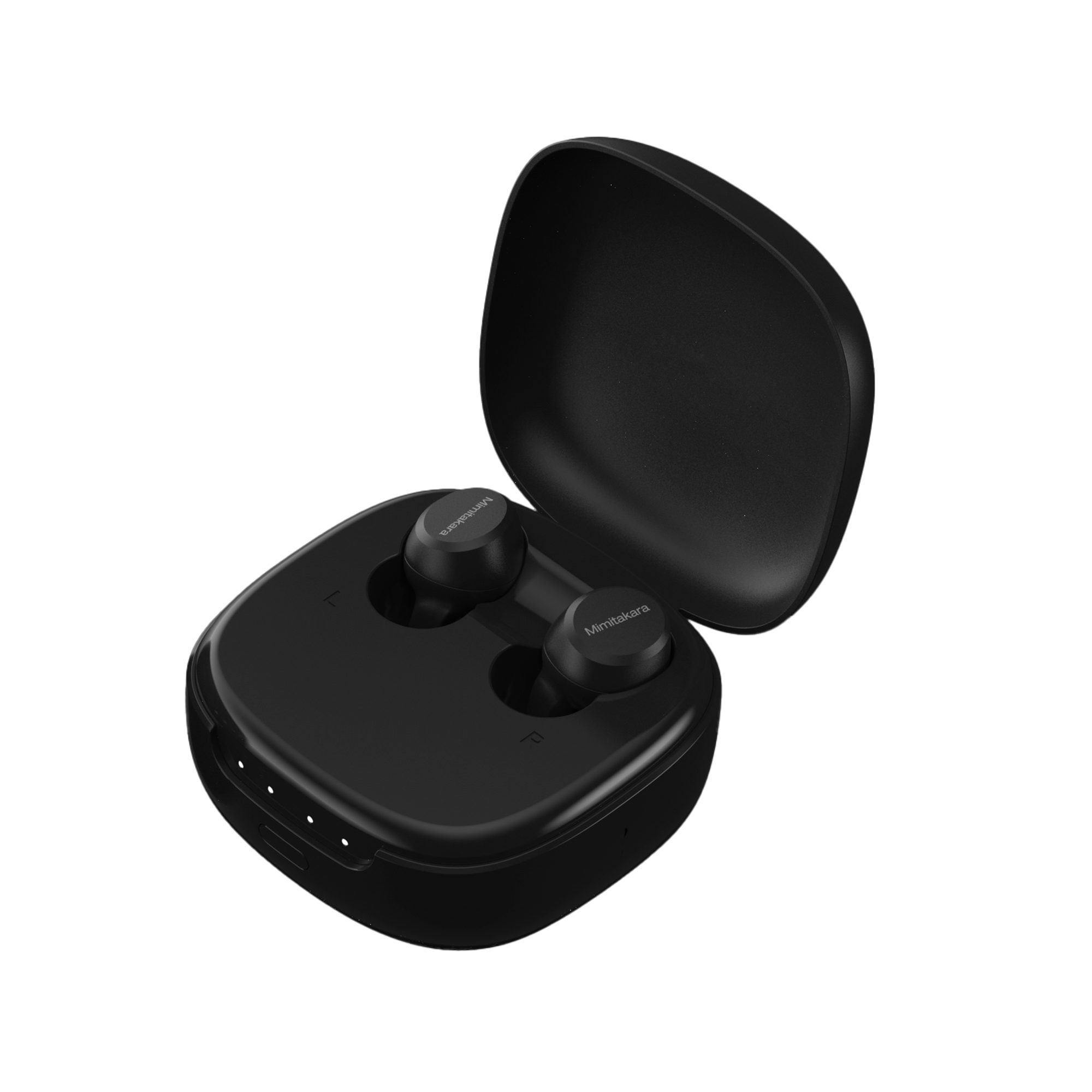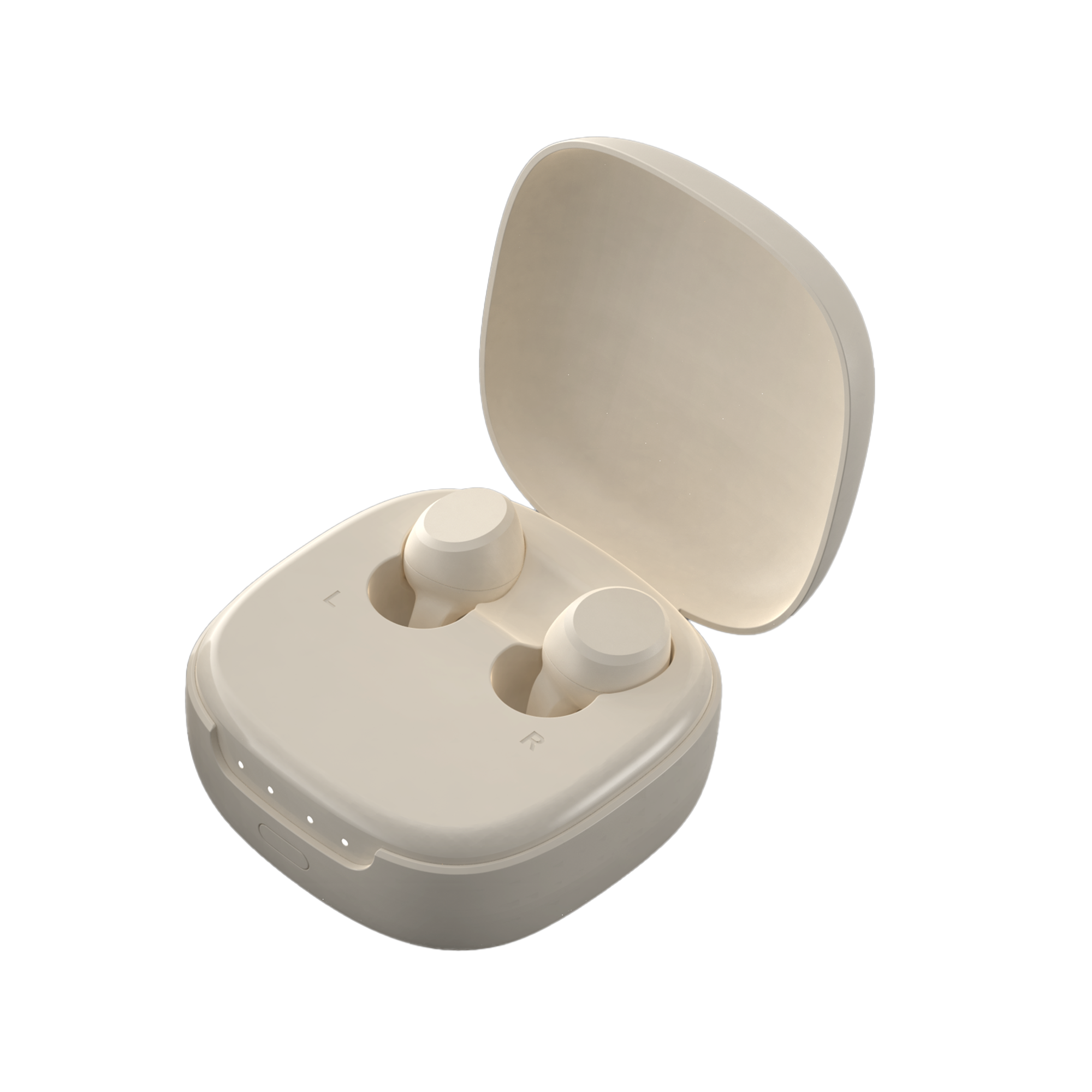Introduction
Hearing loss is one of the most common conditions affecting millions of people worldwide, especially as they age. According to the World Health Organization (WHO), approximately 466 million people suffer from hearing loss globally, and this number is projected to rise significantly over the next few decades. As hearing loss progresses, many individuals turn to hearing aids as an effective solution for improving their ability to hear and communicate.
However, like any medical device, hearing aids come with their pros and cons, and understanding these can help you make an informed decision when considering the right hearing aid for your needs.
In this comprehensive guide, we will explore the pros and cons of hearing aids, discuss the various types of hearing aids available, provide tips for selecting the right device, and explain how to properly maintain your hearing aids to ensure they last for years.
What Are Hearing Aids?
Understanding Hearing Aids
Hearing aids are electronic devices designed to amplify sound and improve hearing for individuals with hearing loss. They consist of a microphone, an amplifier, a receiver, and a battery. The microphone captures sound from the environment, the amplifier increases the sound, and the receiver delivers the amplified sound to the ear.
Types of Hearing Aids
There are several types of hearing aids, each with specific features and applications. Below are the most common types:
- Behind-the-Ear (BTE): The microphone and amplifier are housed in a small case worn behind the ear, with a tube directing the sound into the ear canal.
- In-the-Ear (ITE): These hearing aids are custom-molded to fit inside the outer ear, offering a more discreet appearance.
- In-the-Canal (ITC): A smaller version of the ITE, ITC hearing aids sit partially in the ear canal and are less visible.
- Completely-in-the-Canal (CIC): These are the smallest hearing aids, placed deep inside the ear canal, making them nearly invisible.
The Pros of Hearing Aids
Hearing aids offer numerous advantages, especially for individuals who experience mild to severe hearing loss. Below are some of the key benefits of using hearing aids:
1. Improved Communication
The most significant advantage of hearing aids is their ability to help individuals with hearing loss communicate effectively. By amplifying sounds, hearing aids allow users to hear conversations more clearly, reducing the need for others to repeat themselves.
Example of Improvement in Communication:
- Without Hearing Aids: Struggling to understand speech in noisy environments, often asking people to speak louder.
- With Hearing Aids: Hearing speech clearly, even in noisy settings like restaurants or crowded spaces.
2. Better Quality of Life
Hearing aids can significantly improve an individual’s quality of life by enhancing their ability to participate in social, family, and work activities. People with hearing aids often report higher levels of social engagement, better mental health, and improved relationships due to the reduced frustration in communication.
3. Increased Safety and Awareness
For individuals with hearing loss, certain sounds, such as alarms, sirens, or approaching traffic, may go unnoticed. Hearing aids amplify these sounds, improving awareness of the surrounding environment and enhancing safety.
4. Technological Advancements
Modern hearing aids are equipped with advanced digital technology that offers features such as:
- Noise Reduction: Filters out background noise to focus on speech.
- Bluetooth Connectivity: Connects with smartphones, TVs, and other devices.
- Directional Microphones: Improve hearing in noisy environments.
- Rechargeable Batteries: Eliminate the need for frequent battery changes.
5. Customization for Individual Needs
Hearing aids are highly customizable and can be adjusted to suit different hearing loss levels, environments, and user preferences. Audiologists use hearing tests to fine-tune the settings of the device to provide optimal amplification.

The Cons of Hearing Aids
While hearing aids offer substantial benefits, they also come with certain drawbacks. It's important to weigh both the pros and cons before making a decision.
1. Cost of Hearing Aids
The cost of hearing aids can be a significant barrier for many people. Depending on the type and features, hearing aids can range from $1,000 to $4,000 per device. Additionally, insurance plans often don’t cover the full cost of hearing aids, leaving individuals to pay out-of-pocket.
Cost Breakdown of Hearing Aids
| Hearing Aid Type | Cost (Per Device) | Additional Costs |
| Basic Models | $1,000 - $1,500 | Batteries, maintenance |
| Mid-Range Models | $1,500 - $2,500 | Extended warranty, cleaning |
| Premium Models | $2,500 - $4,000 | Accessories, repair |
2. Maintenance Requirements
Hearing aids require regular maintenance to ensure they function properly. Over time, earwax buildup, moisture, and dirt can obstruct the microphones and speakers, leading to poor performance.
Maintenance Tips:
- Clean hearing aids regularly with a soft cloth and brush.
- Use a drying kit to remove moisture.
- Replace batteries regularly (for non-rechargeable models) or charge them overnight (for rechargeable models).
For more hearing aid care tips, visit our Hearing Aid Maintenance Guide.
3. Adjustment Period
New hearing aid users may experience an adjustment period where sounds may seem unnatural or overwhelming. It may take time to get used to hearing ambient noises like the sound of your own voice, background chatter, or even the hum of appliances.
4. Limited Battery Life
Although rechargeable hearing aids offer convenience, they still have a limited battery lifespan (typically 2-3 years). Once the battery starts to lose its ability to hold a charge, the entire device may need to be replaced.
5. Comfort Issues
Some users may experience discomfort, especially if the hearing aids don’t fit properly. Poor-fitting hearing aids can cause ear pain, irritation, or headaches.

Choosing the Right Hearing Aid
Selecting the right hearing aid involves more than just picking the most expensive model. It’s essential to consider the following factors:
1. Type and Style of Hearing Aid
As mentioned earlier, hearing aids come in different styles, including BTE, ITE, ITC, and CIC. The style you choose will depend on factors such as your lifestyle, hearing needs, and comfort preferences.
2. Level of Hearing Loss
Different hearing aids are designed for different levels of hearing loss. Mild to moderate hearing loss may require a simpler, more affordable device, while severe or profound hearing loss may require more advanced technology with powerful amplification.
3. Lifestyle Needs
If you live an active lifestyle or are frequently in noisy environments, you may benefit from hearing aids with noise reduction, directional microphones, and Bluetooth connectivity.
4. Budget Considerations
While premium hearing aids offer advanced features, there are also affordable options that provide sufficient amplification for mild to moderate hearing loss. Work with your audiologist to find a device that fits both your hearing needs and budget.
Benefits of Regular Hearing Aid Checkups
Regular checkups with your audiologist ensure that your hearing aids continue to function properly. Annual hearing tests can help track any changes in your hearing and allow for necessary adjustments to your hearing aids.
What Audiologists Can Do:
- Adjust settings based on changes in hearing.
- Clean and inspect the hearing aids for damage.
- Help troubleshoot any performance issues.
Schedule an appointment with Mimitakara's audiologists to ensure your hearing aids are functioning optimally. Book an Appointment.
Lifespan of Hearing Aids and When to Replace Them
While the typical lifespan of hearing aids is between 3 to 7 years, users may notice a decline in performance or changes in comfort well before the device is physically worn out. Here are some signs that it may be time to replace your hearing aids:
- Frequent repairs: If your hearing aids require frequent repairs or malfunction despite proper maintenance, it may be more cost-effective to replace them.
- Technology upgrades: As hearing aid technology evolves, you may find that newer models offer better sound quality, connectivity, and comfort.
- Battery issues: If the rechargeable battery no longer holds a charge, it may be time for an upgrade.
Conclusion
Hearing aids are an invaluable tool for improving quality of life for individuals with hearing loss. They come with numerous benefits, including enhanced communication, improved quality of life, and increased safety. However, there are also challenges, such as cost, maintenance, and potential discomfort.
By understanding the pros and cons of hearing aids and considering factors such as hearing loss level, lifestyle, and budget, you can make an informed decision about the right device for your needs.
To ensure your hearing aids last as long as possible, remember to follow proper care and maintenance tips. And if your hearing aids are no longer performing as expected, consult with an audiologist to explore upgrades or repairs.
Explore more about Mimitakara hearing aids and find the right solution for your hearing needs today!
FAQ
Q1: How long do hearing aids last?
On average, hearing aids last between 3 to 7 years. Regular maintenance and proper care can extend their lifespan.
Q2: What should I do if my hearing aids aren’t working properly?
First, clean the devices and check the batteries. If the issue persists, contact your audiologist for adjustments or repairs.
Q3: How often should I replace the batteries in my hearing aids?
For non-rechargeable hearing aids, replace the batteries every 3-7 days. For rechargeable models, charge them nightly.
























